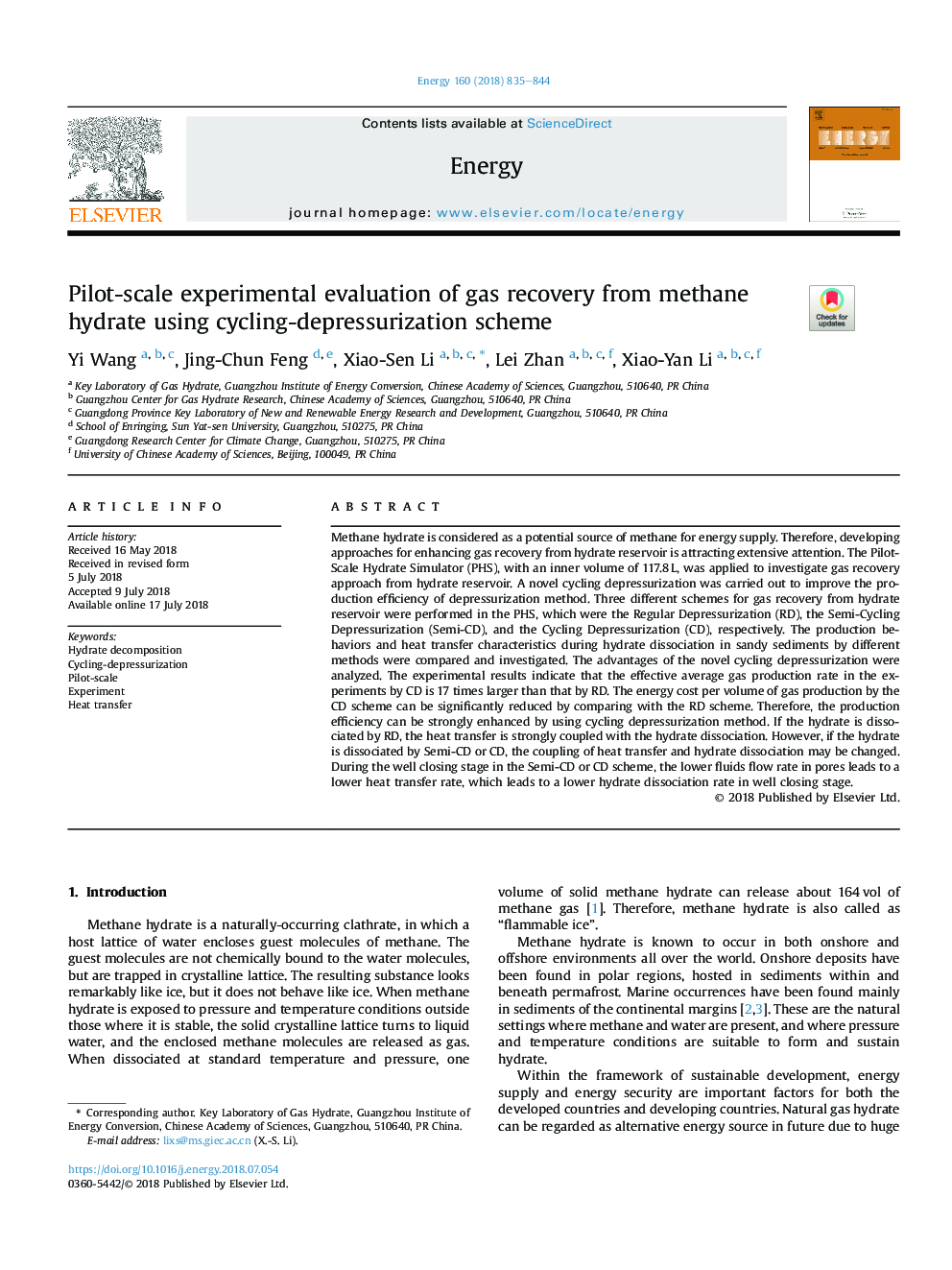| Article ID | Journal | Published Year | Pages | File Type |
|---|---|---|---|---|
| 8070991 | Energy | 2018 | 10 Pages |
Abstract
Methane hydrate is considered as a potential source of methane for energy supply. Therefore, developing approaches for enhancing gas recovery from hydrate reservoir is attracting extensive attention. The Pilot-Scale Hydrate Simulator (PHS), with an inner volume of 117.8â¯L, was applied to investigate gas recovery approach from hydrate reservoir. A novel cycling depressurization was carried out to improve the production efficiency of depressurization method. Three different schemes for gas recovery from hydrate reservoir were performed in the PHS, which were the Regular Depressurization (RD), the Semi-Cycling Depressurization (Semi-CD), and the Cycling Depressurization (CD), respectively. The production behaviors and heat transfer characteristics during hydrate dissociation in sandy sediments by different methods were compared and investigated. The advantages of the novel cycling depressurization were analyzed. The experimental results indicate that the effective average gas production rate in the experiments by CD is 17 times larger than that by RD. The energy cost per volume of gas production by the CD scheme can be significantly reduced by comparing with the RD scheme. Therefore, the production efficiency can be strongly enhanced by using cycling depressurization method. If the hydrate is dissociated by RD, the heat transfer is strongly coupled with the hydrate dissociation. However, if the hydrate is dissociated by Semi-CD or CD, the coupling of heat transfer and hydrate dissociation may be changed. During the well closing stage in the Semi-CD or CD scheme, the lower fluids flow rate in pores leads to a lower heat transfer rate, which leads to a lower hydrate dissociation rate in well closing stage.
Related Topics
Physical Sciences and Engineering
Energy
Energy (General)
Authors
Yi Wang, Jing-Chun Feng, Xiao-Sen Li, Lei Zhan, Xiao-Yan Li,
